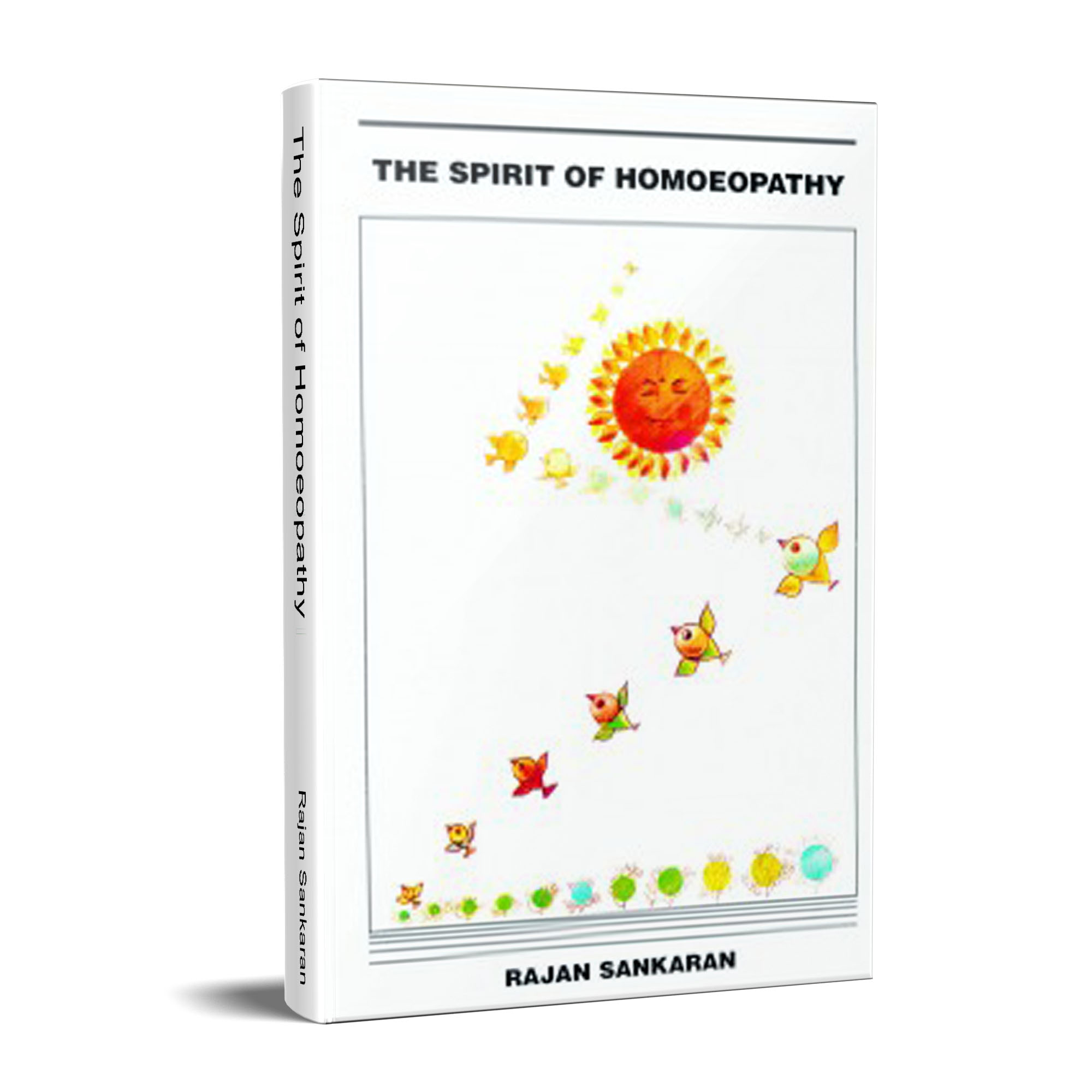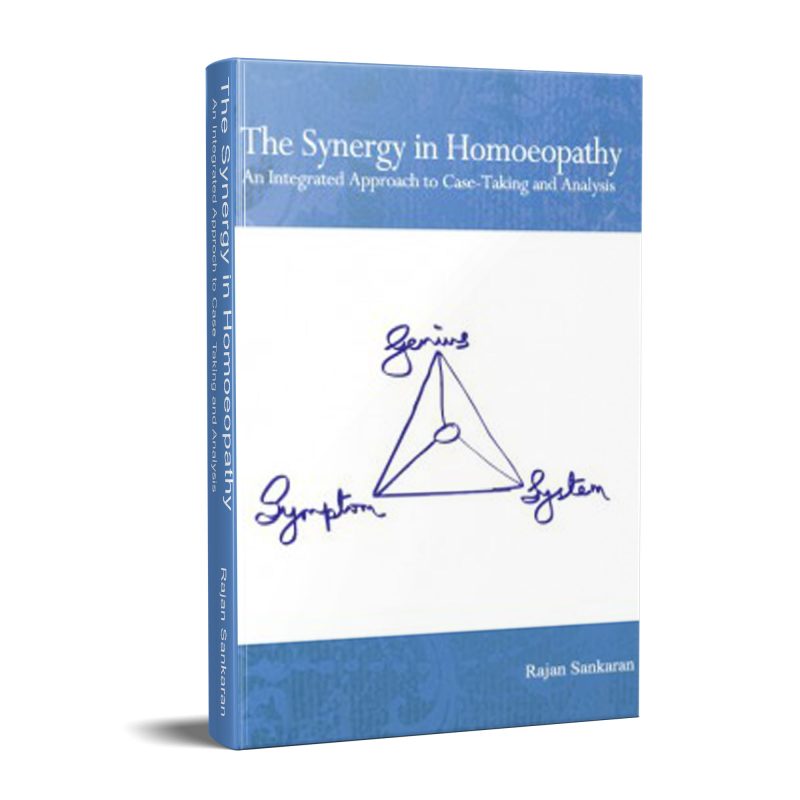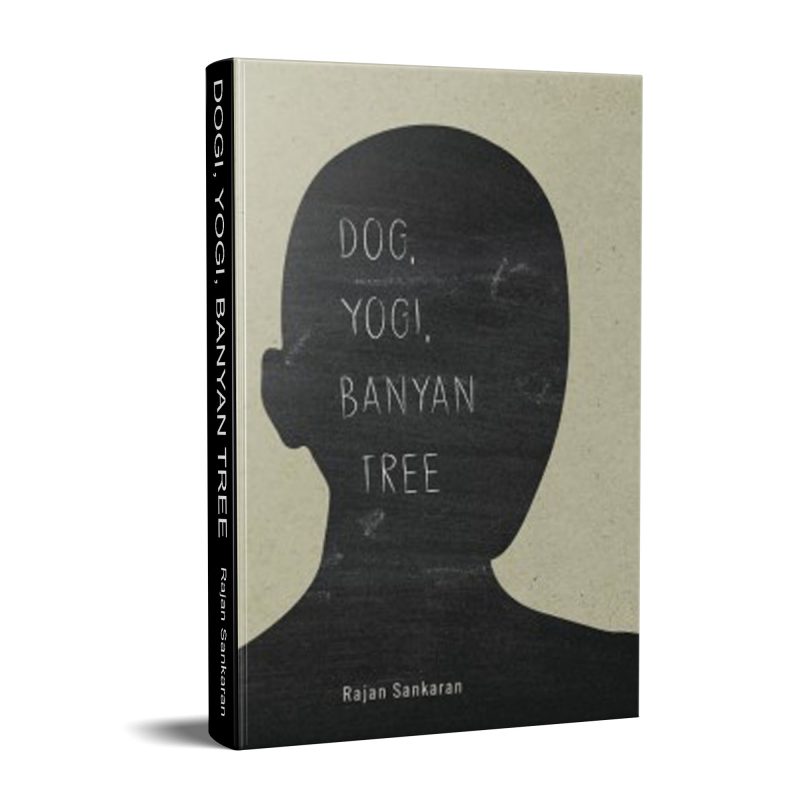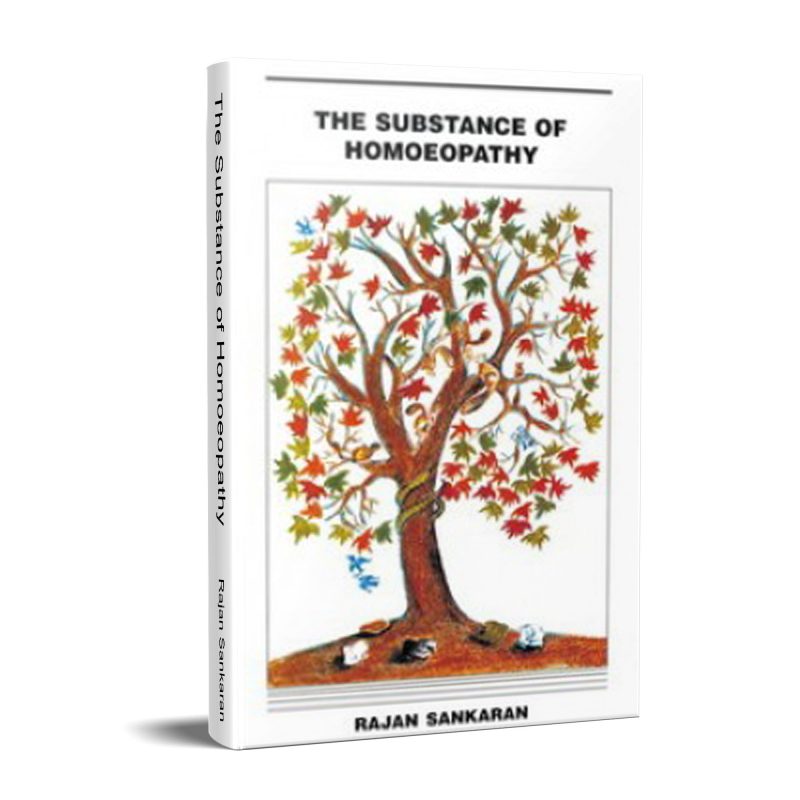The Spirit of Homoeopathy
- ISBN: 978-81-90081-00-9
- Cover: Hard Cover
- Pages: 370
Review in Hpathy – by Vatsala Sperling
In a foreword to this very first edition, published in 1991, Dr. Sankaran writes, “…the aim of the teacher is only to stimulate the teacher within each of us. If this book stimulates you to observe and think, it would have more than fulfilled its purpose.”
At this point of writing this book, Dr. Sankaran had just completed a decade of practice and it is easy to imagine that by now he would have spent countless hours puzzling over the art and science of homeopathy.
[read more]
To bring all readers (homeopaths as well as non-homeopaths) into one starting point, Dr. Sankaran uses part I of this book to offer a quick introduction about homeopathy and its basic principles, and clarifies that homeopathy is a tool that empowers us to connect with the healer residing within each one of us and it also enables us to treat each person as a whole, complete individual whose body, mind and spirit work together in unison, instead of each working alone and fighting with the other for dominance.
Quite likely, Hahnemann had tuned into the ancient healing modalities for creating the foundational philosophy of homeopathy, ‘like cures like’ and for considering mind and body as a psycho-somatic unity driven by the vital force.
As a preliminary hint of what would eventually become a common concept for homeopaths across the world, Dr. Sankaran coins the concepts of kingdoms as he describes the grouping of homeopathic remedies and their source: animal kingdom, plant kingdom, mineral kingdom, disease products nosodes, healthy tissues / secretions sarcodes, and imponderables.
In reading about a recounting of his years at the homeopathy medical school and the early years of his practice, we can see that he was facing a conundrum that we all face at one point or the other: too many styles, routes, techniques and tricks for using the basic tools of our trade – materia medica and the repertories.
Read More
[/read]
– Vatsala Sperling
Review from British Journal
For a long time there has been little original writing concerning the theory and practice of Homoeopathy… In Rajan Sankaran’s new book we have something refreshing and interesting, bursting with the ides of thisfamous Bombay clinician…
The book is divided into four sections: Philosophy, The Mind, Case Taking and Finding the Remedy, and Materia Medica. A number of major themes can be traced throughout the book which is basically an expanded version of lecture notes from the last five years. These unfold as the author tells the story of how his ideas developed, starting with the insight that ‘potentized remedies have dynamic effects only’, and ending with examples of his Situational Materia Medica…[read more]
Sankaran is a master detective and, with a great knowledge of the Repertory, he uses the much neglected sections on delusions and dreams in new and imaginative ways, taking a remark of the patient or an observation and translating it into repertory language with great skill. The book is an inspiration for us to ‘free up’ in our use of the Repertory and to consider the meaning behind our patients’ remarks…
In his situational Materia Medica Sankaran puts into imaginative nutshells the basic delusions or unsuitable postures of a number of homoeopathic medicines…
There are other ideas in the 44 chapters of Sankaran’s book. I have not mentioned his discussion of compensated and uncompensated symptoms, his use of dreams, his technique of case-taking, or the idea of polarities within a homoeopathic medicine. Nor all of these ideas are new,but putting them together into his own framework Sankaran often makes them more memorable and more relevant.
[/read]
British Homoeopathic Journal
Book Preview:
Related products
₹300.00
₹350.00
₹300.00
₹2,700.00






Reviews
There are no reviews yet.